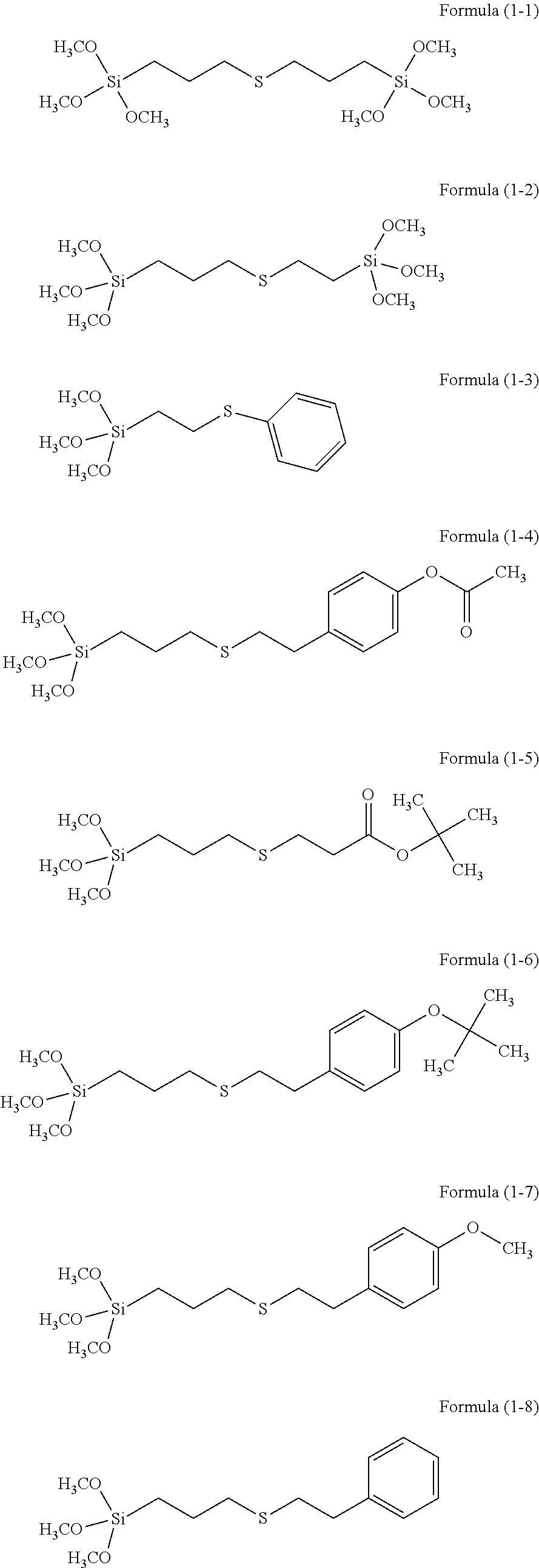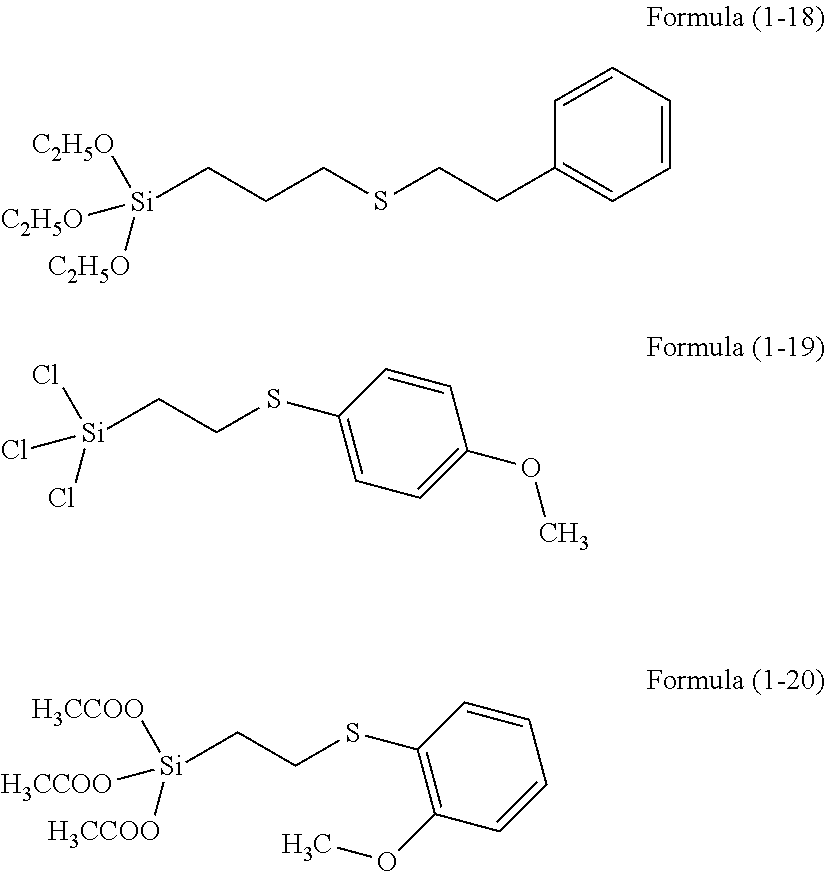Resist underlayer film forming composition containing silicon having sulfide bond
a technology of resisting and underlayer film, applied in the direction of photomechanical equipment, instruments, transportation and packaging, etc., can solve the problem of large influence of active ray reflection on semiconductor substrates
- Summary
- Abstract
- Description
- Claims
- Application Information
AI Technical Summary
Benefits of technology
Problems solved by technology
Method used
Image
Examples
synthesis example 1
[0215]0.18 g of a compound of Formula (1-1), 13.54 g of tetraethoxysilane, 1.98 g of phenyltrimethoxysilane, 4.37 g of methyltriethoxysilane, and 30.11 g of acetone were charged into a 100 mL flask to be dissolved and the resultant reaction mixture was warmed while being stirred with a magnetic stirrer to be refluxed. Next, to the reaction mixture, an aqueous solution in which 0.01 g of hydrochloric acid was dissolved in 6.60 g of ion-exchanged water was added. The resultant reaction mixture was subjected to the reaction for 240 minutes and the resultant reaction solution was cooled down to room temperature. Then, to the reaction solution, 21.00 g of propylene glycol monomethyl ether acetate was added and ethanol that was a reaction by-product, water, and hydrochloric acid were distilled off under reduced pressure to obtain a solution of a hydrolysis-condensation product (polyorganosiloxane). The obtained polymer had a weight average molecular weight Mw measured by GPC in terms of p...
synthesis example 2
[0216]1.75 g of a compound of Formula (1-1), 13.54 g of tetraethoxysilane, 1.98 g of phenyltrimethoxysilane, 3.58 g of methyltriethoxysilane, and 31.32 g of acetone were charged into a 100 mL flask to be dissolved and the resultant reaction mixture was warmed while being stirred with a magnetic stirrer to be refluxed. Next, to the reaction mixture, an aqueous solution in which 0.01 g of hydrochloric acid was dissolved in 6.85 g of ion-exchanged water was added. The resultant reaction mixture was subjected to the reaction for 240 minutes and the resultant reaction solution was cooled down to room temperature. Then, to the reaction solution, 21.00 g of propylene glycol monomethyl ether acetate was added and ethanol that was a reaction by-product, water, and hydrochloric acid were distilled off under reduced pressure to obtain a solution of a hydrolysis-condensation product (polyorganosiloxane). The obtained polymer had a weight average molecular weight Mw measured by GPC in terms of p...
synthesis example 3
[0217]0.144 g of a compound of Formula (1-3), 15.05 g of tetraethoxysilane, 0.99 g of phenyltrimethoxysilane, 5.94 g of methyltriethoxysilane, and 33.19 g of acetone were charged into a 100 mL flask to be dissolved and the resultant reaction mixture was warmed while being stirred with a magnetic stirrer to be refluxed. Next, to the reaction mixture, an aqueous solution in which 0.01 g of hydrochloric acid was dissolved in 7.30 g of ion-exchanged water was added. The resultant reaction mixture was subjected to the reaction for 240 minutes and the resultant reaction solution was cooled down to room temperature. Then, to the reaction solution, 22.00 g of propylene glycol monomethyl ether acetate was added and ethanol that was a reaction by-product, water, and hydrochloric acid were distilled off under reduced pressure to obtain a solution of a hydrolysis-condensation product (polyorganosiloxane). The obtained polymer had a weight average molecular weight Mw measured by GPC in terms of ...
PUM
| Property | Measurement | Unit |
|---|---|---|
| Percent by mole | aaaaa | aaaaa |
| Percent by mole | aaaaa | aaaaa |
| Angle | aaaaa | aaaaa |
Abstract
Description
Claims
Application Information
 Login to View More
Login to View More - R&D
- Intellectual Property
- Life Sciences
- Materials
- Tech Scout
- Unparalleled Data Quality
- Higher Quality Content
- 60% Fewer Hallucinations
Browse by: Latest US Patents, China's latest patents, Technical Efficacy Thesaurus, Application Domain, Technology Topic, Popular Technical Reports.
© 2025 PatSnap. All rights reserved.Legal|Privacy policy|Modern Slavery Act Transparency Statement|Sitemap|About US| Contact US: help@patsnap.com



